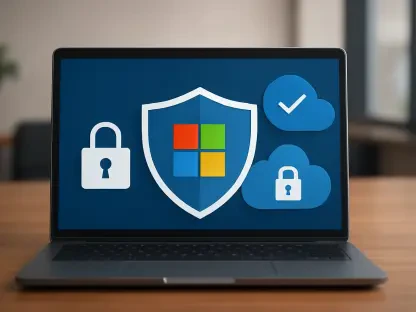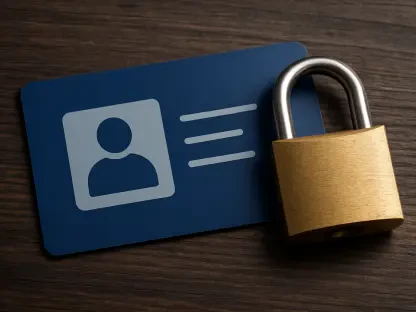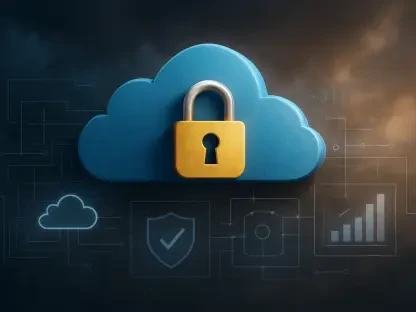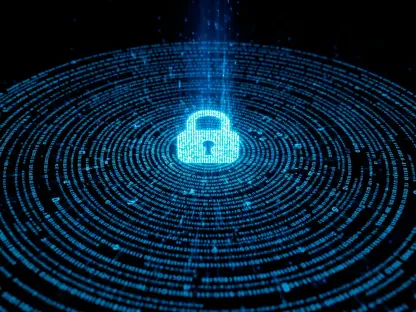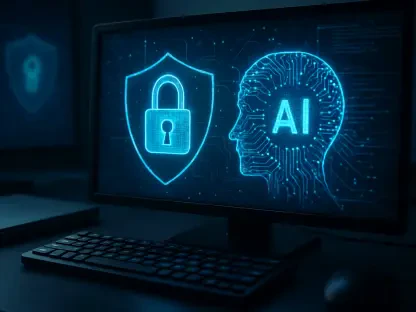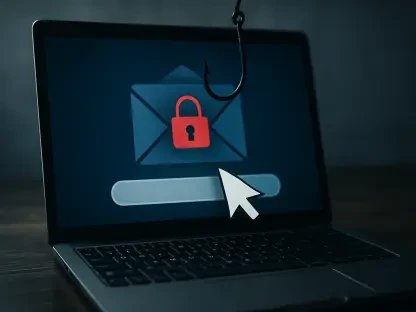In a world increasingly reliant on digital communication, a single text message about an unpaid toll or a misplaced package has ensnared over 1 million people across 120 countries, revealing the alarming reach of a sophisticated cybercrime operation. Known as Lighthouse and orchestrated by a group called the Smishing Triad, this scam has stolen millions of credit card details and caused staggering global losses. How does a seemingly harmless SMS wield such devastating power, and what is being done to stop it?
The Alarming Scale of a Simple Text Scam
The deceptive simplicity of a text message lies at the heart of Lighthouse’s success. Posing as trusted entities like E-ZPass or even Google, these SMS messages lure victims into clicking malicious links with urgent prompts about unpaid fees or delivery issues. The result is catastrophic—over 1 million individuals have fallen prey, with estimates suggesting between 12.7 million and 115 million credit cards compromised in the U.S. alone. The psychological tactic of urgency exploited here taps into everyday concerns, making even cautious users vulnerable.
What fuels this epidemic is not just the message itself but the global reach of the operation. Spanning 120 countries, the scam has adapted to local languages and cultural contexts, impersonating regional brands and services to maximize trust. This isn’t a localized problem—it’s a borderless crisis that has escalated five-fold since earlier benchmarks, catching individuals off guard in their most routine interactions.
Phishing-as-a-Service: A Growing Cybercrime Industry
Behind Lighthouse lies a chilling innovation: phishing-as-a-service. Operated by the Smishing Triad, believed to be based in China, this platform offers ready-made tools for a monthly fee, enabling even novice cybercriminals to launch sophisticated attacks. With hundreds of fake website templates and domain setup utilities at their disposal, perpetrators can mimic legitimate organizations with alarming precision, lowering the barrier to entry for fraud on a massive scale.
The global impact of this model is profound, with financial losses and data breaches affecting not just individuals but also businesses and governments. In the U.S., the sheer volume of stolen credit card data underscores a systemic vulnerability in digital ecosystems. As this service democratizes cybercrime, the threat extends beyond personal loss, challenging the security frameworks of interconnected institutions worldwide and demanding urgent attention.
This trend also signals a shift in how cybercrime operates, moving from isolated actors to organized, subscription-based networks. The accessibility of such tools means that attacks are no longer limited to tech-savvy criminals, amplifying the frequency and sophistication of phishing schemes. Governments and corporations now face a dual challenge: protecting users and dismantling an industry that thrives on scalability and anonymity.
Inside the Smishing Triad’s Deceptive Tactics
Lighthouse’s operations reveal a meticulously crafted web of deceit. The Smishing Triad begins with SMS messages that impersonate well-known brands, tricking users into visiting counterfeit websites designed to steal personal and financial information. These sites, built from hundreds of templates provided by the platform, look convincingly real, often replicating the branding and layout of legitimate pages down to the smallest detail.
The harm doesn’t stop at data theft. Stolen information is repurposed for secondary crimes, such as funding fraudulent Google Ads to perpetuate further scams or manipulating stock prices through pump-and-dump schemes. This multi-layered approach maximizes profit while spreading damage across different sectors, turning a single breach into a cascade of exploitation.
Enterprises face an indirect but significant threat as well. With personal and professional digital spaces increasingly overlapping, compromised employee data can serve as an entry point for targeted attacks on organizations. This blurring of boundaries transforms individual losses into potential corporate crises, highlighting the need for broader security measures that address both personal and institutional risks.
Expert Perspectives on a Complex Criminal Network
Insights from industry experts shed light on the intricate ecosystem surrounding Lighthouse. Kasey Best of Silent Push has noted that the Smishing Triad doesn’t merely stop at stealing data; stolen funds are funneled into elaborate financial scams, including stock market manipulations that ripple through economies. This sophistication underscores how cybercrime has evolved into a multifaceted threat far beyond simple theft.
Further complicating the fight is the role of online platforms in sustaining these operations. Telegram channels and previously active YouTube accounts have served as hubs for distributing Lighthouse tools and training aspiring criminals. While some content has been removed, the adaptability of these networks poses a persistent challenge, as new channels and methods emerge almost daily to fill the gaps.
Hosting providers like Tencent and Alibaba, often used to support phishing infrastructure, have shown mixed responses to takedown requests. Though some cooperation has been achieved, the sheer volume of new phishing links created each day reveals the difficulty in fully curbing this digital footprint. Experts emphasize that dismantling such operations requires not just technical solutions but also international collaboration to address the root of these criminal networks.
Google’s Strategic Counterattack and Advocacy Efforts
Google has taken decisive action to combat Lighthouse, filing a lawsuit in the Southern District of New York against 25 unnamed individuals associated with the Smishing Triad. Leveraging laws like the RICO Act and the Computer Fraud and Abuse Act, the legal effort seeks to disrupt the operation while pursuing damages and injunctive relief. This move signals a direct challenge to the anonymity and impunity enjoyed by cybercriminals.
Beyond the courtroom, Google is pushing for systemic change through advocacy for bipartisan legislation such as the GUARD Act and SCAM Act. These proposed laws aim to bolster defenses against cybercrime by addressing gaps in current regulations and enhancing protections for vulnerable users. Such initiatives reflect a recognition that legal battles alone cannot stem the tide of evolving threats like smishing.
For individuals and businesses, staying vigilant is critical. Recognizing red flags in suspicious texts, securing personal information, and adopting robust cybersecurity practices are essential steps. Supporting policy reforms also plays a vital role, as collective action can help build a safer digital environment. Google’s dual approach of litigation and legislative advocacy offers a blueprint for tackling cybercrime at both immediate and structural levels.
Reflecting on a Relentless Fight
Looking back, Google’s response to the Lighthouse phishing threat stood as a pivotal moment in the ongoing war against cybercrime. The lawsuit and legislative push underscored a commitment to not only disrupt immediate dangers but also reshape the landscape of digital security. Yet, the adaptability of groups like the Smishing Triad served as a stark reminder of the challenges ahead.
As the battle unfolded, it became clear that individual awareness and corporate responsibility had to align with broader policy changes to create lasting impact. Moving forward, fostering international cooperation to target the infrastructure of phishing-as-a-service platforms emerged as a critical next step. Only through such unified efforts could the digital world hope to stay one step ahead of relentless cybercriminals.


